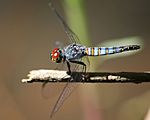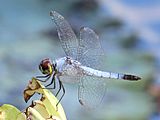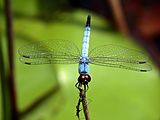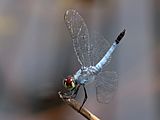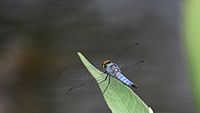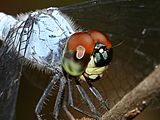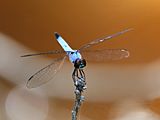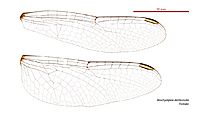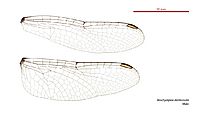Palemouth facts for kids
Quick facts for kids Palemouth |
|
|---|---|
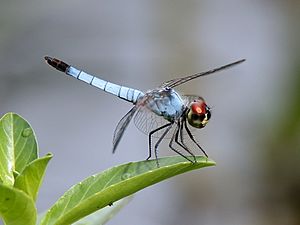 |
|
| Male Brachydiplax denticauda | |
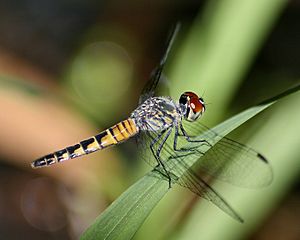 |
|
| Female Brachydiplax denticauda | |
| Conservation status | |
| Scientific classification | |
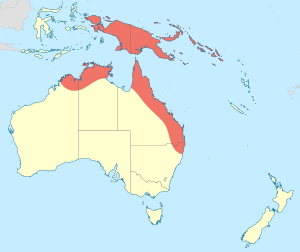 |
The Palemouth (scientific name: Brachydiplax denticauda) is a type of dragonfly. It belongs to the family Libellulidae, which includes many common dragonflies. This interesting insect gets its name from its pale-colored mouth.
You can find the Palemouth dragonfly in several countries. It lives in Australia, Indonesia, Papua New Guinea, and the Solomon Islands. These dragonflies prefer to live near water. They like places with still or slow-moving water, such as ponds or quiet streams.
Male Palemouth dragonflies are quite striking. They are a bright powder blue color. This blue covers both their body and tail. Their upper lip, called the labrum, is a pale cream color. This pale mouth is how the species got its common name. In northern Australia, you can find them along the coast and a bit inland. They live in an arc from southern Queensland all the way to Broome, Western Australia.
What Does the Palemouth Look Like?
The Palemouth dragonfly is a small insect. Its wingspan, which is the distance from one wingtip to the other, is usually between 40 and 60 millimeters. That's about the length of a small ruler!
One way to tell the Palemouth apart from similar dragonflies is by looking at its wings. The Brachydiplax denticauda usually has six tiny lines called antenodal crossveins on its front wings. It has five on its back wings. A very similar dragonfly, the Brachydiplax duivenbodei, has seven crossveins on its front wings and six on its back wings.
Even though the male Palemouths are brightly colored, they can be tricky to spot. Once they land on a lily pad or a similar plant, they often blend in. This makes them hard for people to notice.
Gallery



